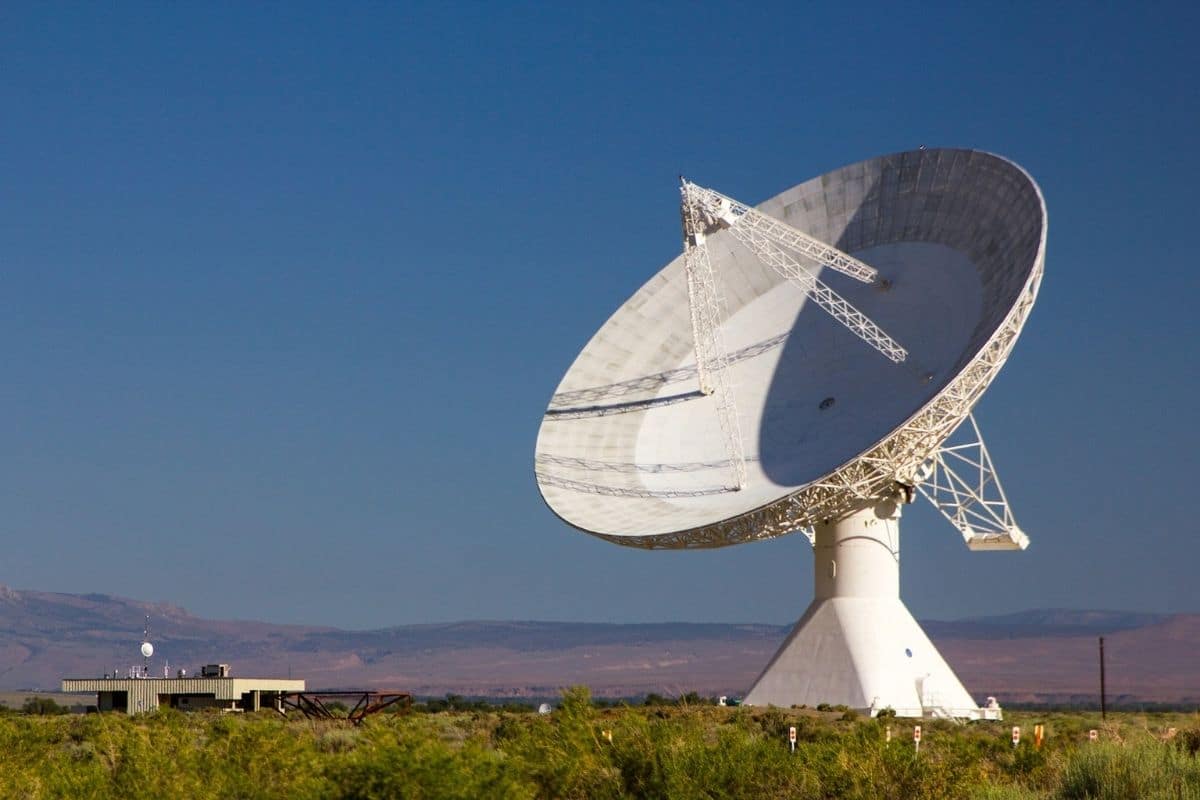
In an effort to make initial contact and raise awareness about the climate crisis, powerful radio messages will be sent by scientists and musicians.
In 2016, astronomers announced that there are as many as seven planets orbiting the dwarf star TRAPPIST-1. Three of them are particularly interesting and could just be livable. Immediately there was, of course, a lot of speculation: could aliens be here? If so, they may soon be aware of our existence. For this fall, music fragments and scientific data will be sent to the galaxy.
TRAPPIST-1 is an ultra-cool dwarf star located about 39 light-years from Earth. As mentioned, seven planets orbit around the star. And since its discovery, expectations have been high. Three of these planets are in the habitable zone, meaning they may harbor liquid water on their surfaces.
The radio messages will be sent to TRAPPIST-1 on October 4, 2022. The broadcasts will take place from the Goonhilly Satellite Earth Station† home to the world’s first commercial deep spacenetwork, located in southern England. The hope is that the messages will provoke a response and that a conversation will start with an as-yet-unknown advanced extraterrestrial intelligence.
Contents
What will be shipped? The messages will contain music as well as scientific information. The music part will consist of short fifteen-second music fragments, among others provided by musicians who participate in the Uzbek Stihia festival, which was created to reflect on the environmental impact of the shrinking Aral Sea. In addition, the song ‘Beauty of the Earth’ by Soviet composer Eduard Artemyev and ‘Journey Through the Asteroid Belt’ by London band The Comet Is Coming will also be launched into space. In collaboration with the Uzbek Institute of Astronomy, the scientific part will include the coordinates of the stars from the star catalog of the Uzbek astronomer and mathematician Ulug Bey.
Climate crisis
The purpose of the radio transmission is not only to make first contact with a possible other civilization, but also to raise awareness about the climate crisis. “Our messages will remind long-lived civilizations what it was like when they struggled to become a sustainable society,” said Douglas Vakoch of METI, the organization dedicated to sending intentional signals to extraterrestrial civilizations.
Stihia festival
In addition, it is not for nothing that musicians from the Stihia festival are given the opportunity to send their music to TRAPPIST-1. “The Stihia music festival takes place in Muynak, which was once a thriving fishing industry on the coast of the Aral Sea,” said Otabek Suleimanov, the festival’s lead producer. “Now that sea is only a shadow of its original size due to numerous environmental factors and the disastrous cotton campaign policy during the Soviet era. Muynak’s future water supply from the snow-capped Himalayan mountains is increasingly threatened by global warming.”
TRAPPIST-1
Incidentally, it is doubtful whether the planets in the TRAPPIST-1 system are actually habitable. While it is tempting to assume that these planets are inhabited, some astronomers strongly doubt that. For example, a previous study showed that the star is extremely active and emits huge amounts of high-energy protons – the same particles that cause the northern lights on Earth. It means that the planets may be pelted with high-energy particles. And that makes it a bit more unlikely that life exists on the planets.
If aliens do live, it could take decades before the signals they send out arrive on Earth. According to Vakoch, an extra motivation to tackle the climate crisis. “In order for humanity to be around long enough to receive a response from TRAPPIST-1, we must face the current climate crisis,” he concludes.
Source material:
†Scientists and musicians will transmit radio messages to nearby star, attempting to make first contact and raise awareness about the climate crisis” – METIA
Image at the top of this article: tegawi via Pixabay